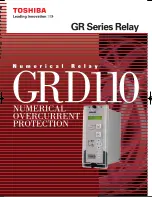
RM7895A RELAY MODULE
32-00122-01
6
Closed Loop Logic Test
The test verifies the integrity of all safety critical loads,
terminals 8, 9, 10 and 21. If the loads are not energized
properly; i.e., the main valve terminal is powered during
PREPURGE, the RM7895 will lock out on safety shutdown.
The RM7895 must react to input changes but avoid the
occurrence of nuisance shutdown events. Signal
conditioning is applied to line voltage inputs to verify
proper operation in the presence of normal electrical line
noise such as transient high voltage spikes or short
periods of line drop out. Signal conditioning is tolerant of
synchronous noise (line noise events that occur at the
same time during each line cycle).
Dynamic Input Check
All system input circuits are examined to assure that the
RM7895 is capable of recognizing the true status of
external controls, limits and interlocks. If any input fails
this test, a safety shutdown occurs and the fault will be
annunciated.
Dynamic Safety Relay Test
Checks the ability of the dynamic safety relay contact to
open and close. Verifies that the safety critical loads,
terminals 8, 9, 10 and 21, can be de-energized, as
required, by the Dynamic Self-Check logic.
Dynamic Self-Check Safety Circuit
The microcomputer tests itself and related hardware, and
at the same time, the safety relay system tests the
microcomputer operation. If a microcomputer or safety
relay failure occurs and does not allow proper execution of
the
self-check routine, safety shutdown occurs and all safety
critical loads will be de-energized.
Expanded Safe-Start Check
The conventional safe-start check, which prevents burner
startup of flame is indicated at startup, is expanded to
include a flame signal check during STANDBY, an airflow
switch check and a safety critical load check.
Off Cycle (Standby or Prepurge)
Flame Signal Check
The flame detection subsystem (flame detector and
amplifier) is monitored during STANDBY. If a flame
simulating condition or an actual flame exists, a system
hold occurs and startup is prevented. If the flame signal
exists at any time after the first 40 seconds of STANDBY, a
safety shutdown occurs and is annunciated. A shutter-
check amplifier and self-checking detector are energized
for the first 40 seconds during STANDBY and the last two
seconds before exiting STANDBY. If a flame exists, a safety
shutdown occurs. A standard amplifier is energized
continually through STANDBY and PREPURGE; if a flame
exists, a safety shutdown occurs.
Tamper Resistant Timing and Logic
Safety and logic timings are inaccessible and cannot be
altered or defeated.
Verified Spark Termination
The ignition terminal is monitored to assure early spark
termination (ten seconds ignition and pilot and ten
seconds
pilot and main only
).
First-Out Annunciation and Self-
Diagnostics
Sequence Status Lights (LEDs)
provide positive visual
indication of the program sequence: POWER, PILOT,
FLAME, MAIN and ALARM. The green POWER LED blinks
every four seconds, signifying that the RM7895 hardware
is running correctly.
Optional multi-function Keyboard Display Module
shows
elapsed time during PREPURGE, PILOT IGN and MAIN
IGN. As an additional troubleshooting aid, it provides
sequence timing, diagnostic information, historical
information and expanded annunciator information when
a safety shutdown or hold or normal operation occurs.
First-Out Annunciation
reports the cause of a safety
shutdown or identifies the cause of a failure to start or
continue the burner control sequence with an English text
and numbered code via the optional Keyboard Display
Module. It monitors all field input circuits, including the
flame signal amplifier. The system distinguishes 43
modes of failure and detects and annunciates difficult-to-
find intermittent failures.
Self-Diagnostics
add to the First-Out Annunciation by
allowing the RM7895 to distinguish between field
(external device) and internal (system related) problems.
Faults associated within the flame detection subsystem,
RM7895 or Plug-in Purge Card are isolated and reported
by the optional Keyboard Display Module. See the 7800
SERIES System Annunciation Diagnostics and
Troubleshooting, Form 65-0233.
Interlock Requirements
The following interlock input is provided:
Airflow Switch Interlock
This interlock is typically connected to an airflow switch.
The Airflow Interlock (ILK) input must close ten seconds
into PREPURGE or within the specified purge card timing;
otherwise, a recycle to the beginning of PREPURGE or
lockout will occur, depending on how the airflow switch
selectable jumper is configured (see Table 6).







































